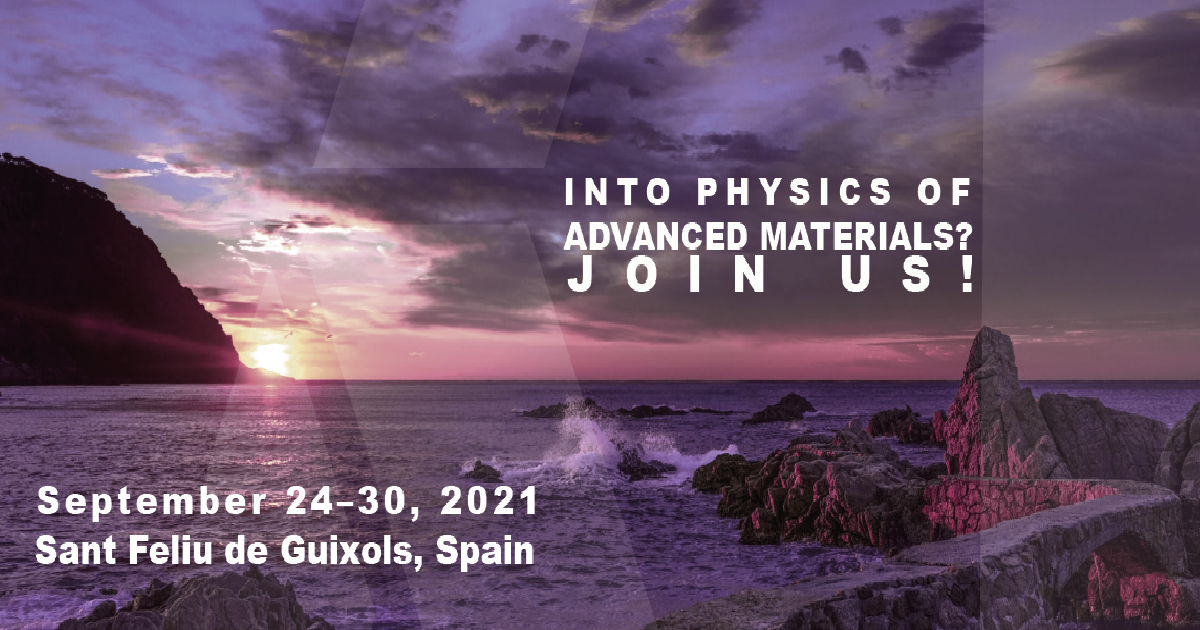- 3.2Impact Factor
- 6.4CiteScore
- 16 daysTime to First Decision
New Developments in Physics of Advanced Materials
This special issue belongs to the section “Materials Physics“.
Special Issue Information
Dear Colleagues,
This Special Issue is devoted to new developments in the physics of advanced materials and includes all types of materials (inorganic, organic, hybrid, bulk, low dimensional systems, thin films, layers, powders, nanocomposites), materials design, simulation models, preparation, characterization, and advanced applications (modern electronics, spintronics, photonics, energy and environment, sensors, medical applications).
The issue covers structural studies and studies on all type of phenomena observed at the interaction of advanced materials with electrical, magnetic, and electromagnetic fields, and controlled atmospheres and includes but is not limited to the following topics:
- Thin films and nanostructures for modern electronics;
- Laser–material interactions and processing;
- Materials for energy and environment;
- Magnetic materials, spintronics, and related devices;
- Nanostructures and low dimensional systems;
- Emerging electronic memory materials and devices;
- Polymer materials and composites;
- Functional materials and applications;
- New developments in sensing materials and sensor devices;
- Trends in condensed matter theory
Dr. Jan Lancok
Dr. Daniel Moraru
Prof. Dr. Felicia Iacomi
Dr. Isabelle Berbezier
Guest Editors
Manuscript Submission Information
Manuscripts should be submitted online at www.mdpi.com by registering and logging in to this website. Once you are registered, click here to go to the submission form. Manuscripts can be submitted until the deadline. All submissions that pass pre-check are peer-reviewed. Accepted papers will be published continuously in the journal (as soon as accepted) and will be listed together on the special issue website. Research articles, review articles as well as short communications are invited. For planned papers, a title and short abstract (about 250 words) can be sent to the Editorial Office for assessment.
Submitted manuscripts should not have been published previously, nor be under consideration for publication elsewhere (except conference proceedings papers). All manuscripts are thoroughly refereed through a single-blind peer-review process. A guide for authors and other relevant information for submission of manuscripts is available on the Instructions for Authors page. Materials is an international peer-reviewed open access semimonthly journal published by MDPI.
Please visit the Instructions for Authors page before submitting a manuscript. The Article Processing Charge (APC) for publication in this open access journal is 2600 CHF (Swiss Francs). Submitted papers should be well formatted and use good English. Authors may use MDPI's English editing service prior to publication or during author revisions.
Keywords
- advanced materials
- interaction phenomena
- surface and interface processes
- transport phenomena
- simulation models
- applications

Benefits of Publishing in a Special Issue
- Ease of navigation: Grouping papers by topic helps scholars navigate broad scope journals more efficiently.
- Greater discoverability: Special Issues support the reach and impact of scientific research. Articles in Special Issues are more discoverable and cited more frequently.
- Expansion of research network: Special Issues facilitate connections among authors, fostering scientific collaborations.
- External promotion: Articles in Special Issues are often promoted through the journal's social media, increasing their visibility.
- e-Book format: Special Issues with more than 10 articles can be published as dedicated e-books, ensuring wide and rapid dissemination.

